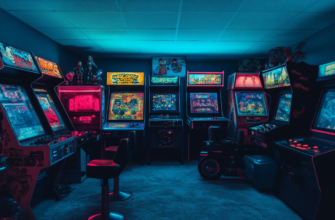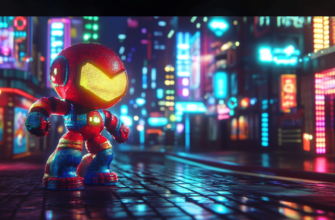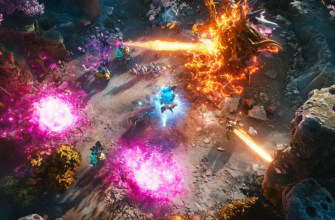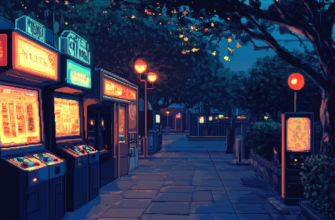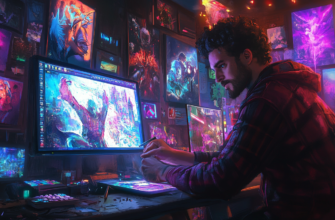- Why indie games are taking over the gaming industry
- Understanding indie games: what makes them unique?
- Key features of indie games:
- Why are indie games becoming so popular?
- The magic of creativity and innovation
- Affordable, yet amazing experiences
- Community-driven success and support
- Step-by-step guide to falling in love with indie games
- Step 1: Start with highly praised indie classics
- Step 2: Browse platforms known for indie games
- Step 3: Keep up on indie game sales
- Step 4: Support the devs you love
- Step 5: Take the plunge and explore fresh genres
- Practical tips to enhance your indie gaming experience
- Join indie game communities
- Dive into early access titles
- Balance your backlog
- Conclusion: Indie games are here to stay
Why indie games are taking over the gaming industry
Hey there, fellow gaming enthusiast! Whether you’re a casual gamer or someone who clocks serious hours, you’ve probably heard the term “indie games” being tossed around in the gaming world. But have you ever really thought about why indie games have exploded in popularity over the last few years?
Well, let me tell you, indie games are having a serious moment right now, and for good reason. They’re redefining what gaming can and should be, offering creativity that you just don’t always get from the big-budget AAA titles. They’re the underdogs of the gaming world, and guess what? Gamers are really digging the vibe. So let’s dive into what makes indie games special, and why they’ve managed to capture the hearts of gamers everywhere.
Understanding indie games: what makes them unique?
First things first, let’s get into what indie games actually are. Indie stands for “independent,” which means these games are developed by small and usually self-funded teams, sometimes even just one person. Unlike AAA games — which are made with huge teams and come with massive marketing budgets — indie games are passion projects that don’t necessarily play it safe.
Key features of indie games:
- Creative freedom: Indie developers aren’t chained to a publisher’s expectations. They can go wild in terms of storytelling, art style, and gameplay mechanics, often leading to unique experiences.
- Smaller budgets: Sure, they don’t have the massive budgets of AAA studios, but that totally works in their favor. With limited resources, developers get more experimental, thinking outside the box to create something that stands out.
- Art styles and graphics: Indie games aren’t competing with AAA titles graphics-wise, but they bring such unique and artistic visual focuses that make them shine. Games like Celeste and Hollow Knight, for instance, have art styles that stick with you long after you finish playing.
- Shorter development cycles: Because studios are small and projects tend to be more focused, indie games often experience quicker development timelines. This allows for a faster response time to trends and interests in the gaming community.
- Direct engagement: Most indie developers communicate directly with their fan base. Whether it’s through Discord channels, social media, or Steam forums, this transparency builds dedicated communities around these games.
Now that we’ve clarified what indie games are and what they bring to the table, let’s get deeper into why they’ve become so dang popular.
Why are indie games becoming so popular?
The magic of creativity and innovation
If you’ve ever felt jaded by the repetitive nature of mainstream gaming — you know, the endless franchises, loot boxes, and microtransactions — then indie games are probably the breath of fresh air you didn’t know you needed. These games focus on gameplay, storytelling, and artistry first, which means you’ll often discover entirely new concepts and emotionally intense narratives in them.
Take a game like Undertale, developed almost entirely by one guy, Toby Fox. It flipped the script on traditional role-playing games by allowing you to choose whether to fight or spare your enemies. That sense of freedom and moral decision-making was both innovative and emotionally stirring. Mainstream games don’t often explore these kinds of choices in such powerful ways because they have to appeal to a massive audience. Indie devs? They can take risks, and when they work, they succeed big time.
Affordable, yet amazing experiences
One of the major reasons indie games have become popular with gamers like you and I is the price point. Let’s be real here — AAA titles sometimes cost a lot, and it’s a major commitment. Indie games, on the other hand, are more affordable. Most of the time, you can snag a brilliant indie game for less than $20, or even catch it in a Steam sale for a fraction of that!
Why pay $60 for the newest blockbuster that might feel like a soulless cash grab when you can spend $10 on an indie game that packs a ton of heart and innovation?
With a smaller price point, the risk goes down, and you’re more inclined to try out new genres or quirky-looking games you might’ve ignored on the top-seller lists. It’s like indie games let you roll the dice, but at minimal cost to your wallet.
Community-driven success and support
Another brilliant thing about the rise of indie games? The community aspect is next-level. Platforms like Steam, Itch.io, and even social media have made it easier than ever to find and support indie developers directly. It almost feels like you’re building a relationship with these devs by joining in on early access builds or leaving feedback. It’s a two-way street, and that superhuman connection between the creators and us, the players, is probably one of the coolest aspects of the indie gaming world.
When you look at the runaway success of indie games like Stardew Valley — where players provided tons of feedback to help evolve the game — you see how vital community involvement can be for the longevity and popularity of a title. That’s something AAA developers often miss the mark on.
Step-by-step guide to falling in love with indie games
Step 1: Start with highly praised indie classics
If you’re new to the world of indie games, I’ll give you a good launching point. Start with some of the classics that have already made big waves. Check out games like Celeste, which delivers a challenging but rewarding platformer experience while touching on meaningful subjects like mental health. Don’t sleep on Hades either — a masterclass in both art style and rogue-like mechanics.
Step 2: Browse platforms known for indie games
Steam and Itch.io are goldmines for indie games. Steam’s search filters let you narrow down options by genre, popularity, and more. Itch.io, on the other hand, is more of a treasure trove for quirky, experimental games. Always be on the lookout there, because you never know what might grab your attention.
Step 3: Keep up on indie game sales
Indie game developers often participate in massive sales. Bookmark platforms like Humble Bundle or GOG, where you can snag bundles of indie games at ridiculously low prices. Steam’s periodic seasonal sales are also prime opportunities to stock up. Seriously, it’s like Christmas for indie game fans.
Step 4: Support the devs you love
Once you’ve started diving into indie games, take a moment to support the creators you appreciate. Whether that’s by leaving a positive review, joining their Discord server, or backing future projects on Kickstarter, your support directly impacts indie developers. It keeps the cycle of creativity alive and well.
Step 5: Take the plunge and explore fresh genres
One of the best things about indie games is how daring they are with blending genres. Ever played a farming sim/crafting game with a cyberpunk aesthetic? Indie devs experiment with everything. You’ll find new favorites this way. I can assure you that I’ve enjoyed everything from card-battling dungeon crawlers to emotional visual novels because indie games aren’t stuck in the same genre boxes. Take some risks!
Practical tips to enhance your indie gaming experience
Join indie game communities
Whether on Reddit, Discord, or a platform like Steam’s Community Hub, indie game communities can be super helpful. Developers often hang around to answer questions or release updates about their games, and fans share tricks, secrets, or mods you may not find elsewhere.
Dive into early access titles
Don’t shy away from early access games if they catch your eye. While they’re technically still in development, many early access indie games are quite polished and provide a behind-the-scenes look into development. You can even impact how the game turns out based on your feedback and bug reports.
Balance your backlog
It can be super tempting to throw yourself into every quirky game you see, but balancing your video game backlog will help you appreciate each one fully. Set aside some time to really immerse yourself in each indie world — your patience will be rewarded.
Conclusion: Indie games are here to stay
At the end of the day, indie games have become more than just an alternative to AAA titles. They offer gamers exactly what they crave: creativity, immersion, community, and affordability, all packed into passionate projects. If you haven’t yet plunged into the world of indie gaming, now’s the perfect time to start.
My challenge to you: Fire up your PC, jump onto Steam or Itch.io, and spend some time exploring the indie titles that are changing the gaming landscape. Trust me, you won’t regret it.
Feel free to leave a comment or even recommend other indie games that should be on our radar! Let’s keep this conversation going — indie devs need all the love they can get, bro.



